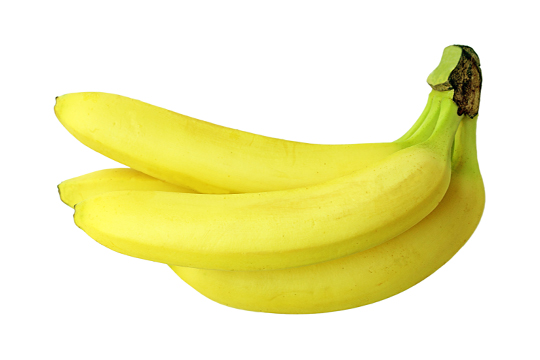
Reducing Food Waste in Foodservice
October 16, 2018 by Doreen Garelick, Dietetic Intern
Our intern Doreen attended a food waste summit for restaurants and compiled these tips to help food service operators redirect…
Nutrition 101
May 7, 2013

Senior Culinary Nutritionist Andrea Canada explains the effects of a sodium/potassium imbalance and suggests some dietary sources of potassium.
Sodium and potassium have been back in the headlines recently. Recently, the BMJ published several reviews that examined the impact of reduced sodium and increased potassium intake on deaths from heart disease and stroke globally. Generally, they found that millions of deaths from heart disease and stroke could be avoided by modest reductions in sodium and increased potassium intake.
Sodium can raise blood pressure, which puts additional strain on your heart and blood vessels. Therefore, it’s understandable that reducing our intake of sodium would decrease risk of heart disease and strokes. While sodium is frequently discussed, we don’t hear quite as much about potassium. Potassium is a mineral that can counteract some of the less desirable effects of sodium by helping our bodies excrete more sodium and lower blood pressure.
Though I've written about this topic before, it’s worth revisiting. In the US, we generally consume more sodium than the USDA recommends. Consumption surveys tell us that most people consume more than the recommended amount of sodium per day (3371mg on average compared with a recommended 2300mg). To make matters worse, we also consume too little potassium (2632mg on average compared with a recommended 4700mg).
If you eat out frequently or eat more convenience foods that may be processed, you may be getting more sodium -- and less potassium -- than you think. You can check food labels for the sodium content or look out for nutrition facts provided by chain restaurants. In addition, you should eat plenty of fruits and vegetables, which are the most common sources of potassium. For a list of foods containing potassium, check out my previous post here.
If you like to cook at home, here are a few tips to reduce the sodium in your meals:
How do you make sure you get enough potassium? Let us know in the comments section below.

October 16, 2018 by Doreen Garelick, Dietetic Intern
Our intern Doreen attended a food waste summit for restaurants and compiled these tips to help food service operators redirect food waste from landfills.
Nutrition 101

Nutrition 101
September 26, 2018 by Doreen Garelick, Dietetic Intern
Ever notice headlines about rapid weightloss? Dietetic Intern Doreen Garelick looks deeper into a recent eye-catching headline to see if there's any truth behind it.
Connect
 Follow us on Twitter
Follow us on Twitter Friend us on Facebook
Friend us on Facebook Follow us on Pinterest
Follow us on Pinterest Follow us on Instagram
Follow us on Instagram Read our Blog
Read our Blog Watch videos on YouTube
Watch videos on YouTube Watch videos on Vimeo
Watch videos on Vimeo Connect with us on Linkedin
Connect with us on Linkedin Find us on Foursquare
Find us on Foursquare
Tweets by @SPEcertifiedBlog Search
Categories
SPE Certified Newsletter
Sign up for news on the latest SPE-certified venues, events and SPE updates.
We will never share your personal information with a third party.